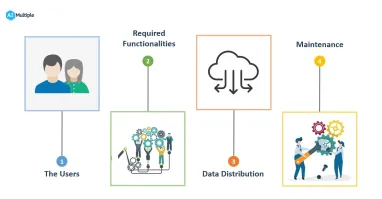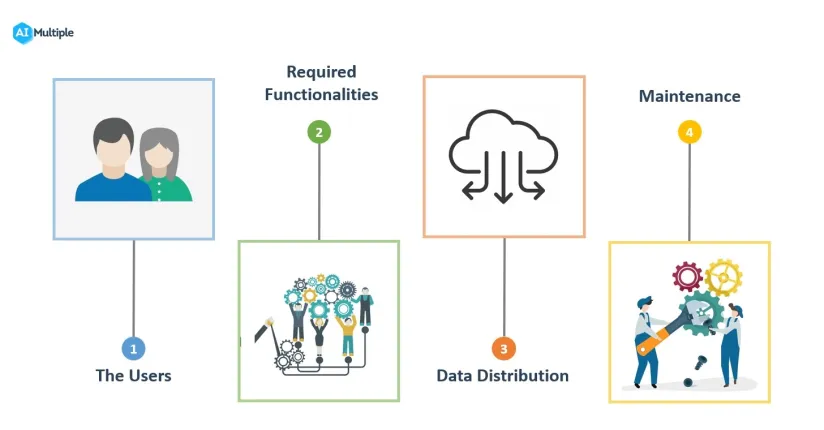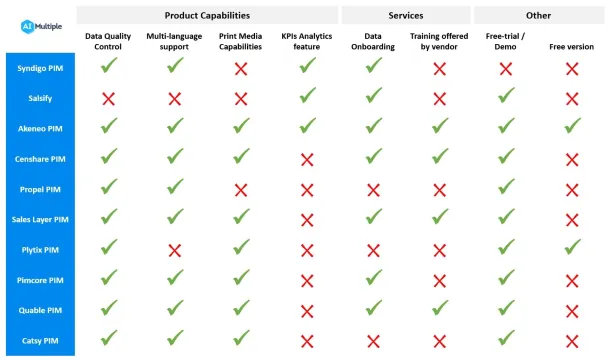Top 10 PIM Software Vendors in 2024 & Selection Criteria


There are various benefits to expanding your brand and product lines, And as companies realize these benefits, they continue to offer more1. However, there are always two sides to every story; while some product line expansions are steady and healthy, others can be aggressive and damaging to the business if not well managed2. Poor product information management (PIM) is also why product expansion strategies fail for many businesses3.
PIM software can help overcome such problems by making the process more efficient; however, picking the right tool is the first step towards such benefits. Since this process can be overwhelming, we recommend getting a clear view of the PIM software landscape before making any decisions.
This article explores the PIM software landscape by presenting data-driven criteria for selecting the right product information management solution and comparing the top 10 vendors on the market.
What are the must-haves and nice-to-haves in a PIM solution?
Once you have done the groundwork required to integrate PIM software into your processes, which includes:
- Getting everybody on board,
- Getting your data governance team involved,
- Cleaning up and digitizing your existing product data,
You are ready to explore the PIM software options.
Sponsored
You must digitize your existing product data to import or onboard it into your new PIM tool. Clickworker can make your product data ready for your PIM software through a crowdsourcing platform. They work with over 4 million registered contributors located globally. They offer extraction and digitization of all types of product information from different places in a business and make it import-ready for a PIM system.
Consider the following factors while shopping for a PIM tool.
1. Who will be using the PIM solution?
One of the first things you need to consider is who will be using the PIM software; the answer to this can help you decide on the features that will be required.
- The number of users: First, you need to look for how many users will be using the tool. This is important because some PIM systems charge by the number of users, while others charge by the SKU. Also, consider if you will be adding users to the package in the future.
- Types of users: Since everyone will use the software differently, they might need different role-based permissions. You can look for role-based access rights that can ensure data security and quality while evaluating the solutions.
- User skillset: Based on your employees’ level of digital dexterity and the amount of further training required, you can choose the PIM tool’s complexity level.
2. What PIM functionalities will be required from the solutions?
Another factor that requires attention is the data functionalities needed for the tool.
- Data onboarding: Most data fed into a PIM system comes from suppliers or vendors; therefore, it is important that the PIM software has automated data onboarding features (regulatory processes) and a central repository.
- Data quality control: We have discussed how preprocessing data is important before feeding it into any PIM system. However, discrepancies can still occur after the data is fed; therefore, having built-in correction capabilities are also necessary for a good PIM tool.
- Flexible and configurable: The needs for a PIM vary from organization to organization, and the finest PIM systems can adapt to meet both your business’s present and future needs. Data management is improved, and product catalogs and launches are made simpler with a PIM that lets you configure your product layouts into grids, trees, or hierarchies. Consider the level of customization offered by the tool.
- Digital asset management: As unstructured data becomes more popular, often the data being managed in a PIM software is heavy and rich in nature (images, videos, audio clips, etc.) and requires digital asset management or DAM capabilities. Therefore, having a PIM tool with DAM capabilities can be beneficial.
- Other integrations: PIMs can not operate in isolation. A PIM tool should ideally act as a central hub for product data, gathering information from and distributing it to a range of interconnected sources and systems, including ERP, CRM, logistics, accounting, and invoicing systems, among others. Choose a PIM with connectors that can sync with external applications and databases after taking into account the systems your PIM needs to communicate with.
- Multiple language support:
3. What data distribution challenges will the PIM software tackle?
Every business has a different structure with challenges related to sharing and distributing data between other departments. To ensure those issues are tackled by the PIM tool, consider the following factors:
- Downstream integration: Integrated with and Supplying data to various downstream channels is one of the basic functions of the PIM software. Look for advanced APIs to support external third-party applications if your company needs a lot of such downstream integrations.
- Multi-language support: Choosing a PIM with multi-language support will help ensure that your product data is localization-ready if your company operates across borders.
- Print media capabilities: It is possible to create and export printable content in some PIM tools. Before choosing a solution, you should consider this functionality if creating print media is a priority for your company.
- Data distribution automation: If your company maintains large amounts of product data across numerous channels, ensuring the proper distribution of that data can be time-consuming and tedious. Selecting a platform with partial or complete automation capabilities can help you save time.
4. What are the PIM tool’s maintenance requirements?
Maintenance is one of the most important factors when selecting a PIM tool. Here is why:
- Maintenance costs: Bug fixes, upgrades, and support services will most likely be included in the regular maintenance process of your PIM. Think about the cost of upgrades; large-scale software will cost more to upgrade but can provide greater feature customization. Support levels might range from a self-help manual to a round-the-clock call center facility.
- Select a tool with significant support for your solution’s setup and maintenance if your business is new to PIM practices.
- Scalability and pricing: While some vendors charge based on the SKU with the option of adding more users without paying anything in the future, others charge more and provide unlimited SKUs. Some vendors also offer a range of price plans with the option of adding or removing features in the future.
- Select the best pricing and scalability strategy based on the size and type of your business and your projected future growth.
- Training offered by vendor: Some solutions can be difficult to use or might require additional skills. In such cases, you need to check if the vendor offers any training for your employees.
Which Vendors offer PIM solutions?
This section highlights the top 10 product information management or PIM software vendors on the market.
Notes
- We will not be regularly updating the table above (Figure 1); however, you can check our data-driven and regularly updated list of product information management (PIM) software vendors to find the best option for your business.
- The checklist has been created based on vendor claims.
- The software vendor list is sorted based on number of employees
Table 1. PIM vendor checklist of specific features

Table description
Our analysis identified that most vendors offer the following features:
- Integration: All vendors offered integration capability with other systems, such as ERP, using connectors and APIs.
- Scalability: All vendors offered scalable solutions. However, Censhare PIM offers modular solutions with a pay-per-module system.
- Free trial/versions: Our analysis identified that While most vendors offer free trials or demos, only a few (Plytix PIM, Akeneo PIM) offer free versions.
- Automation: We identified that all vendors offered automated workflows.
- Digital asset management: All companies offered digital asset management (DAM) services, either as a built-in feature in the PIM tool or as an add-on feature.
Further reading
- Quick Guide To Product Information Management (PIM)
- Elevate Your Online Business with Product Data Management
If you still need help finding a vendor or have any questions, feel free to contact us:
References
- Odjick, Desirae (Jun 24, 2021). “Product Line Extensions: What They Are, Examples, and Tips for Forming Your Strategy” Shopify. Retrieved Nov 30, 2022.
- Tow, Hannah (Jan 1, 2021). “What is Brand Extension? The Good, Bad, and Hilarious”. G2. Retrieved Nov 30, 2022.
- “Learn More about Why Poor Product Information is Damaging your Brand and Your Pocket”. Feet On The Street Co. LinkedIn. November 3, 2020. Retrieved Nov 30, 2022.


Comments
Your email address will not be published. All fields are required.